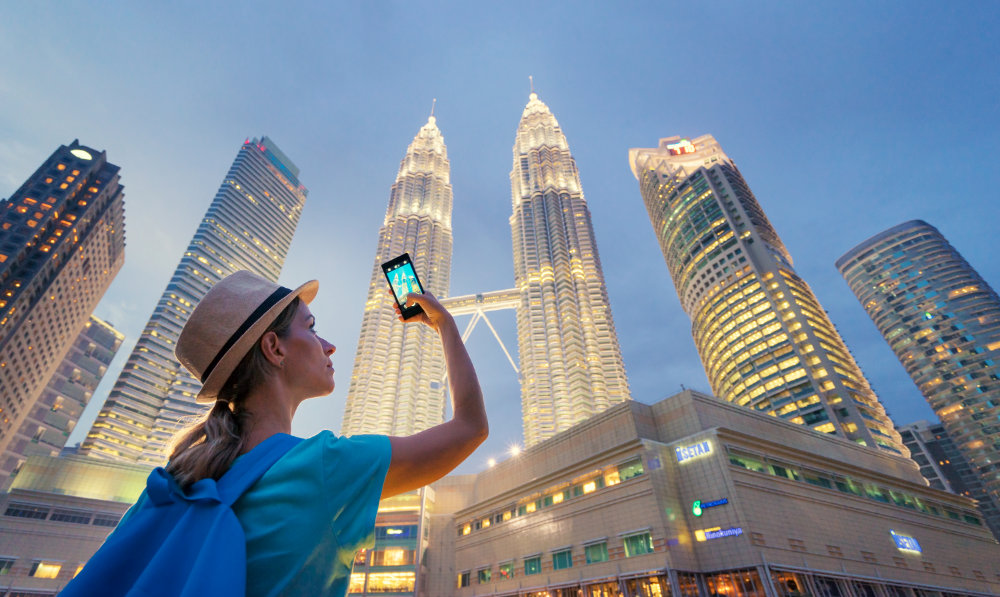KUALA LUMPUR: Malaysia is focusing its promotional efforts on millennial and Generation Z travelers from the Middle East, the tourism minister told Arab News, as the country sets out to revive its pandemic-wrecked hospitality sector.
The Muslim-majority nation, which markets itself abroad as an ideal holiday destination, with a multi-ethnic culture, lush rainforests and pristine beaches, suffered a heavy blow when it shut its borders to foreign visitors in 2020 and remained isolated until April this year.
Malaysia is popular among visitors from the Middle East and has been ranked as a top destination in the Global Muslim Travel Index since 2015.
To boost post-pandemic arrivals, its marketing efforts are now focused on visitors from the demographic cohorts known as Gen Z — those born between the late 1990s and 2000s — and millennials — born between the early 1980s and mid-1990s.
Tourism Minister Nancy Shukri told Arab News in a recent interview that millennial and Gen Z tourists are “two of the most influential groups of Muslim travelers that will shape the future trends of the market.”
As she outlined the country’s promotional strategy, the minister said these groups of travelers from the Middle East are “often categorized to be adventurous and more open minded in their choices of holiday activities, while still observing their religious obligations.”
Shukri explained that the term “adventurous” extends beyond sports-related activities, such as hiking, climbing and diving,” and also refers to “cultural exchanges and interaction with the environment” — from tree planting and birdwatching to participation in local festivals and learning local languages.
To cater to millennial and Gen Z visitors from the Middle East, the country is trying to promote niche tourism products such as ecotourism and adventure travel, but also volunteering, and other activities that are in line with sustainable tourism practices — travel experiences that include concern for social and environmental issues, as well as the welfare of host communities.
“It is observed that Muslim travelers, including (from the) Middle East traveler market, now have a more sophisticated need for spiritually fulfilling and transformative travel experiences that could enrich their lives,” Shukri said.
“Activities like volunteering and socializing with the destination’s community at local festivals, for example, can create a valuable memory that elevates their travel experience. This is one example of how tourism can be linked to sustainability.”
Hopes for attracting Middle Eastern visitors are high after the Arabian Travel Market, an annual tourism event organized in Dubai, which was held on May 9-12.
Malaysia’s tourism ministry took part in the event with its Tourism Malaysia and Islamic Tourism Center, as well as local tourism boards, travel agencies, and representatives of resorts and hotels.
“Feedback from ATM 2022 was tremendous and overwhelming,” Shukri said, adding that sales of 34.5 million Malaysian ringgit ($7.8 million) were generated during the four-day event.
“Middle East industry players were intrigued with Malaysia’s Muslim-Friendly Accommodation Recognition, developed by ITC, which helps tourists to easily identify hotels with Muslim-friendly facilities.”
Before the global pandemic, Malaysia received about 400,000 visitors from the Middle East in 2019. Travelers from Saudi Arabia topped the arrivals, accounting for a quarter of the visits.
The number of international visits to the Southeast Asian nation, where tourism had contributed 13 percent of the national economy, dropped significantly during the pandemic, with fewer than 135,000 visitors in 2021, compared with 26.1 million in 2019.
As it seeks to revive its tourism sector, Malaysia has set a 2022 target of 4.5 million visitors and a revenue of $2.5 billion.
So far, according to the tourism ministry’s data, 2.38 million foreigners have visited the country this year, arriving mainly from India, the Philippines, Singapore, Thailand and Saudi Arabia.




